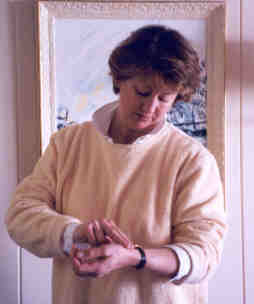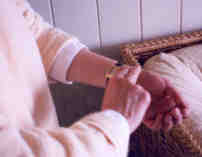












          |
   |
|
What is atrial fibrillation? Atrial fibrillation (AF) is a very irregular heartbeat. AF can be a dangerous condition if not diagnosed, treated and monitored. It occurs when the upper chambers of the heart, known as the atrium, beat rapidly and irregularly. This can lead to the formation of blood clots which can enter the blood stream and block circulation to the brain, causing a stroke.
|
|
|
Wouldn't my healthcare practitioner know if I had this condition? Not necessarily. Some people have AF all the time while others may have it only on occasion. It may come and go. Atrial fibrillation may cause a person to have symptoms, such as episodes of shortness of breath, dizziness or light-headedness. Some feel a thumping in the chest, called palpitations. There are other causes for irregular heart rate besides AF so see your doctor or healthcare practitioner if you have symptoms. AF is a risk factor for stroke. Many people have no symptoms. AF can only be detected by performing a pulse check. That is why the National Stroke Association recommends every adult do a pulse check routinely twice a year. A good time to remember to check your pulse is when you reset your clocks for daylight-savings time. |
|
|
Can I learn to do a pulse check? Yes! A pulse check is simple and easy to do, Here's how... How to do a Pulse Check |
|

|
|

|
|
What is a normal pulse rate?
A normal pulse rate is between 60 to 100 beats per minute and is strong and regular. If your pulse is irregular or if it is too fast or too slow, notify your doctor or healthcare practitioner.
Most Americans are unaware of the potentially life-threatening link between AF and stroke. People with AF have a five-fold increase in risk for stroke. Pulse check could potentially lead to detection and treatment, significantly reducing the 80,000 AF related strokes that occur each year.
What can I do?
Be aware of atrial fibrillation, the importance of pulse self-check twice a year and know the warning signs of stroke.
Source: The National Stroke Association. NSA recommends all healthy adults do a pulse check twice a year to screen for AF. Recommended times to remember are in the Spring and Fall, when resetting clocks for daylight savings time change.
Photographs © copyright Women’s Heart Foundation, Trenton, NJ
Stroke |
What is a Stroke? |
Stroke: Are You at Risk? |
Stroke Warning Signs |
Atrial Fibrillation (AF) |
Pulse Check Twice a year to Screen for AF |
Stroke Facts
Back to top
Disclaimer | Donate Now | Contact Us | Site Map | Store
|
©1999-2000; updates: 2002, 2004, 2005, 2007 Women's Heart Foundation, Inc. All rights reserved. Unauthorized use prohibited. The information contained in this Women's Heart Foundation (WHF) Web site is not a substitute for medical advice or treatment, and WHF recommends consultation with your doctor or health care professional. |